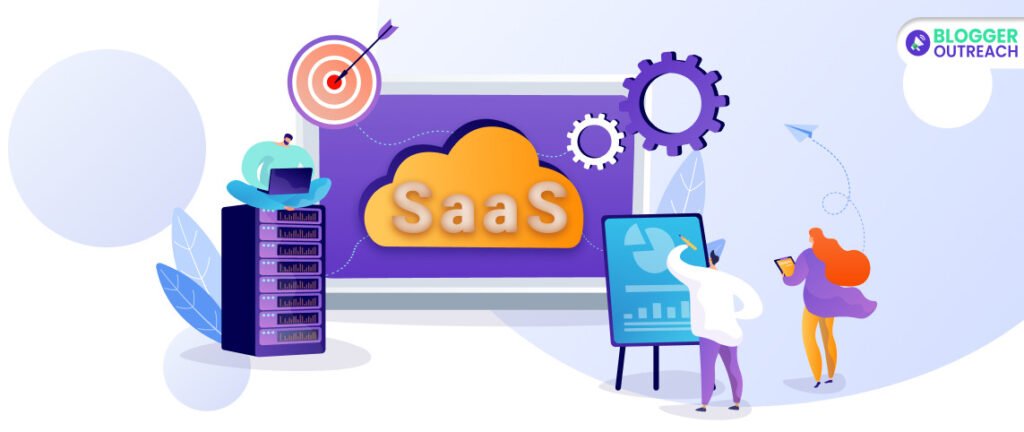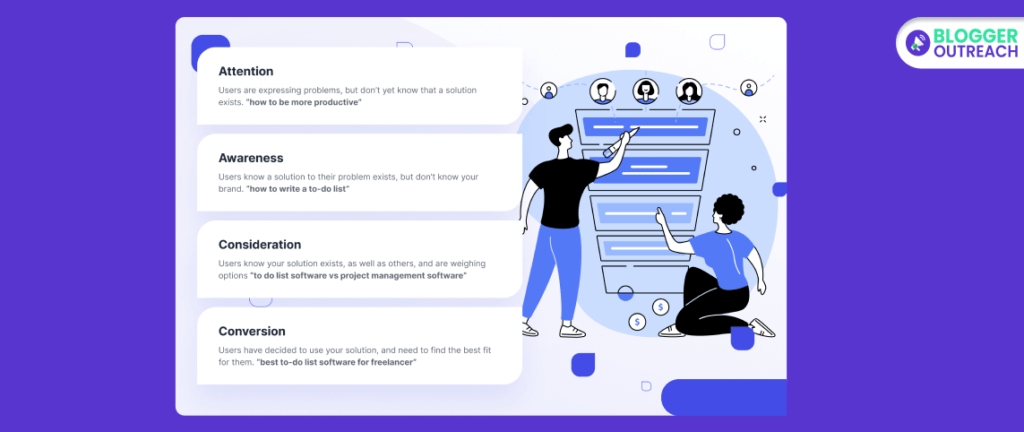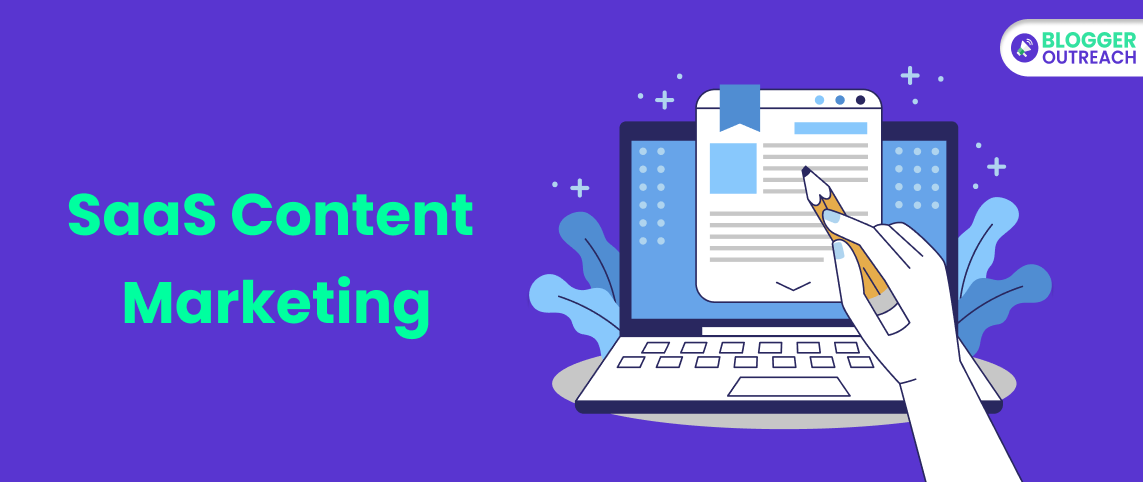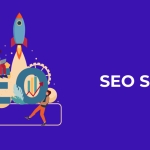STOP if your SaaS marketing strategy isn’t producing results! It’s time to change the way you are doing it.
As a Leading SEO agency, we have produced amazing results with B2B SaaS clients.
Also, guess what? We rely on ONE thing that brings better results than anything else. If your guess is SaaS content marketing, then you are absolutely right!
In fact, to be precise, our favourite is guest posting.
It has come to our attention that many SaaS marketers are unaware of how SaaS content marketing operates. Therefore, we are committed to providing education on this subject.
In This Article, You Will Learn:
- What’s different about SaaS Content marketing.
- Why does it matter?
- The secrets to it.
- Challenges involved.
- A step-by-step strategy for Saas content marketing.
- How Guest Posting Can Help You in Saas Content Marketing.
- Gain insight into the content marketing strategies of the world’s leading SaaS platform.
So, shall we begin our discussion on SaaS content marketing? Well, let’s start.
Table Of Content
What’s Special With SaaS Content Marketing?

We admit that the core essentials are the same. However, SaaS content marketing has unique factors compared to other types of content marketing. Here are they:
- Complexity Of Product: SaaS products are complex. So, content marketing should focus on providing easy-to-understand content. In turn, customers will better understand the value and benefits.
- Educational Content: SaaS content marketing relies heavily on educational content such as blog posts, whitepapers, ebooks, webinars, and tutorials.
- Trial and Demo Emphasis: SaaS content marketing often includes offering free trials, demos, or limited versions of the software. This allows potential customers to experience the product firsthand before making a purchasing decision.
- In-Depth Product Information: SaaS content marketing typically involves providing in-depth information about the features, functionality, integrations, and use cases of the software. This helps potential customers understand how the SaaS solution can address their specific needs.
- Personalization and Segmentation: Effective SaaS content marketing targets specific audience segments. It can be based on industry, company size, role, and pain points. So, ensure personalized content that addresses individual needs and challenges.
- Customer Success Stories and Testimonials: SaaS content marketing uses customer success stories to build trust and credibility.
- Finally, Continuous Engagement: SaaS content marketing requires continuous effort to engage (from discovery to post-purchase). Content is crucial.
Now that you understood SaaS content marketing, it’s time to share some data with you.
Data That Talks In Favour Of SaaS Content Marketing
Firstly, let’s share some facts with you.
Content marketing is crucial for SaaS growth, according to ProfitWell.
A client of Nectafy saw 647% growth from content alone, resulting in $547000 in sales. Secrets to SaaS Content Marketing Success.
People Often Make A Mistake Here…
Basically, most SaaS startups may seem ONE thing unnecessary…especially when there are operating at a small level. What’s that?
Following a documented approach. Yes, it may sound like a trivial thing. However, the truth is far from that. Okay, let’s tell us one thing…
…you know the strategy. You have the strategy with you – which one is more convincing?
Obviously, the latter!
A Documented Content Marketing Strategy Will Help You In:
- Understanding your target audience in a deeper way.
- You can also analyze the market and the topic better.
Guess what? According to research, when you have a document SaaS content marketing roadmap with you… you are likely to get successful.

✅In essence, Here Is A PRO TIP: It is crucial to have a well-documented strategy for your SaaS product. This will not only streamline your processes but also pave the way for growth.
Challenges Involved In SaaS Content Marketing Success
As per SEMrush, SaaS marketers face significant content marketing challenges regarding:
- Producing link-worthy content.
- Garnering traffic through their content.
- Curate content that speaks directly to the target audience.
- Making your content SEO optimized.
- How to find ideas that people will love.

By now, you have some ideas regarding the nitty-gritty of SaaS content marketing; it’s time to talk about SaaS content strategy.
Click Here To Know About: Link Building In Digital Marketing
Step-by-Step Plan For SaaS Content Marketing Success
We’ve come to the part you’ve been waiting for. It’s time to get into the strategies involved:
1. Have A Solid Foundation Ready

Most people initiate the process with SaaS content writing. However, that’s not the ideal way to start with.
Preparing your fundamentals before moving on to a more advanced strategy is important.
First thing first…As we already mentioned, the power of documented strategy.
You Need To Ensure A Well-Documented:
- Target audience analysis – who are you targeting? Do you know them well?
- The unique selling proposition of your company. The value provided by you.
- The way you pretend your messaging.
- What’s your brand narrative? How are you going to tailor your content, keeping your brand narrative in mind?
- What’s different with your content?
Once you have clear answers to these questions, it is important to document them. This will ensure the smooth application of your strategies.
Next comes RESOURCES.
Yes, resources are important. Because you can not randomly start procuring your content. You need:
🟣A well-structured website with smooth functionalities like – faster loading speed, internal linking, optimum user experience, and mobile optimization.
🟣Secondly, people who can write content as well as copy.
🟣Further, designers who will handle the creatives.
🟣Laslty, you need content marketing tools that bring great results. This may involve keyword research, tracking, and SEO tools.
2. Next, Be Specific With Your SaaS Content Marketing Goals

This content piece revolves around product signups. To specify, more signups are a result of a higher digital footprint. When you attract more people to your site, you are likely to get more signups.
Apart From This, Goals Can Range From:
- Brad awareness.
- Improving brand locality.
- Getting conversions.
- Boosting revenues.
- Establishing trust.
To summarize, consider revenue and marketing qualified leads when setting content goals. Be clear with your KPIs for each content type you produce.
3. What’s Special With Your SaaS Product?

Deep down, you must know your business in a detailed way. Believe us; there is no other way out.
Here, the logic It’s quite simple! If you do not know your product well, how are you gonna create content aligned with your content?
In SaaS content marketing…
Creating content isn’t enough – it has to be in line with your product.
Ask Yourself These Questions:
- What problems am I going to solve?
- What’s the USP of my SaaS product?
- Who is my target audience? What are they expecting from me?
4. Understanding SaaS Content Marketing Funnel Is The Key To B2B SaaS Content Marketing

Now, let’s focus on understanding the marketing funnel. It is often referred to as the customer journey. SaaS products go through various stages before a customer makes a purchase or becomes a loyal user.
The Funnel Typically Comprises Three Main Stages:
🟣Top Of Funnel (TOFU): It’s the awareness stage, where potential customers just find out they have a problem. There’s a need for information and solutions, but they might not know about your SaaS.
🟣Middle Of Funnel (MOFU): Here, your potential customers research and evaluate different solutions (including your SaaS). They’re looking for more details and comparing options.
🟣Bottom Of Funnel (BOFU): This is when potential customers research and evaluate different solutions, including your SaaS. They’re comparing options and looking for more details.
Understanding Search Intent For Each Stage Of The Funnel
Well, what do we mean by keyword search intent? It refers to the underlying motivation of a user when they type a specific keyword into a search engine. It can be broadly categorized into four types:
🟣Informational Intent: Users are looking for information, such as “how to,” guides, tutorials, and educational content. This aligns with the TOFU stage of the funnel.
🟣Navigational Intent: Users are searching for a specific website or brand, indicating that they might be aware of your SaaS product. This can occur at any stage of the funnel.
🟣Commercial Intent: Users are looking for comparisons, reviews, and product details. This fits the MOFU stage, where potential customers are evaluating different options.
🟣Transactional Intent: Users are ready to make a purchase or sign up. They might search for terms like “buy,” “pricing,” or “free trial.” This corresponds to the BOFU stage.
Types Of Topics Suitable For Each Stage Of SaaS Content Marketing Funnel
How to get B2B SaaS content ideas? Target SaaS content marketing keywords and topics that align with each stage and keyword intent:
🟣TOFU Topics: Create blog posts, guides, and videos that address common challenges your target audience faces. For example, “How to Improve Team Collaboration with SaaS Tools.”
🟣MOFU Topics: Craft comparison articles, feature breakdowns, and case studies that showcase the unique value of your SaaS product. For instance, “Comparing Top Project Management SaaS: [Your Product] vs. Competitor X.“
🟣BOFU Topics: Develop content that provides in-depth product information, pricing details, and success stories. Examples include “Unlocking Efficiency: [Your Product] Pricing Plans and Benefits.”
Alright, by now, you got a lot of insights into SaaS content marketing. How’s the article going so far?
Best Practices Of Topic Selection
- Topics with Business Potential
- Don’t forget about content that focuses on brand awareness and authority. Hence, focus on content that establishes thought leadership, industry trends, and customer testimonials.
5. Know Your Audience Well

You shouldn’t miss anything. Try to gather as much information as you can.
🟣To begin with, create detailed customer personas representing your ideal SaaS product users. Consider factors such as job roles, industries, pain points, goals, challenges, demographics, and online behaviour.
🟣Analyze your existing customer data, website analytics, and any available market research. Look for trends and patterns in user behaviour, such as the pages they visit, engagement, and the keywords they use to find your website.
🟣Next, keyword research is here. Identify the terms your audience uses to find solutions for your SaaS product. Tools like Google Keyword Planner, SEMrush, or Ahrefs can help you identify relevant keywords. Keep a close eye on search volume and competition – it is better to balance both.
🟣Perform a content audit to determine the best and worst-performing content. If a piece of content is performing well, what are the underlying reasons for its success? If it’s not performing well, why not?
🟣Pay attention to the experts. When you listen to them, you will discover what type of SaaS content. If possible, conduct interviews or collaborate with industry experts and thought leaders. Their perspective can provide valuable insights into your target audience’s needs and challenges.
Well, how’s the article going? And the time has come to talk about content.
6. Create Product-Aligned Content

Creating content is not enough for Saas Content Marketing. It must have a purpose.
SaaS content strategy should revolve around Product-Aligned content.
What Sets it Apart?
You have to seamlessly weave the product throughout the entire narrative. Unlike traditional content, Product-Aligned content goes beyond:
✅Direct Alignment: The content must consistently align with SaaS features and benefits, addressing the specific pain points. This alignment must be strategic, making the solution integral to the narrative.
✅Case Studies and Use Cases: Showcase real-life use cases and success stories. By doing this, you can demonstrate how your SaaS product can directly solve specific problems. This goes beyond surface-level descriptions and provides tangible proof of the product’s effectiveness.
✅Feature Integration: Rather than listing features in isolation, the content integrates each feature description. Always highlight how the tool directly addresses them.
✅Actionable Implementation: You must empower readers to take immediate action. Doing so ensures that your content isn’t just informative but actionable.
Wait…it’s not over.
Certain considerations come with product-aligned content. And you shouldn’t miss them.
🟣No matter what SaaS product you are promoting – it should not break the flow of the content.
🟣As BloggerOutreach always told you – write valuable content. Just because you are writing Product-aligned content doesn’t mean the value of the content gets neglected.
🟣Analyses search intent and tailor your content around it. Ensure that you cover the topic in detail.
In essence, your goal should be to create value while seamlessly weaving your product into your content.
7. Finally, Our Favourite – Guest Posting

A number of SaaS companies employ guest blogging tactics.
In this context, consider complementary products.
For example (SaaS Product A): This tool helps teams plan, organize, and track their projects. It provides features like task assignments, timelines, Gantt charts, collaboration tools, and progress tracking.
(SaaS Product B): This tool helps freelancers and businesses track their time. Users can log billable hours, generate detailed time reports, and create professional invoices.
Site A can guest post on site B and drive relevant traffic to its website. As a result, they will experience improved online visibility. This results in more product signups.
However, a publisher will consider your guest post pitch when they see value in it. To be precise, when they see your content, it benefits their audience.
Conversely, while choosing a site, ensure that the traffic is relevant to yours. Next, look for higher DA, DR and traffic.
If you feel like seeking external help, choose a reputed guest posting agency.
Analysing Global Leader: Learn HubSpot’s SaaS Content Marketing
Well…We have already discussed the result-worthy strategies of SaaS content marketing. It’s time to learn from a leading SaaS connect marketing platform.
No surprise! We are talking about Hubspot the pioneer in inbound marketing. Over time, BloggerOutreach has learned about the following:
🟣HubSpot excels in understanding its target audience by creating detailed buyer personas.
🟣They maintain an extensive content library covering a wide range of marketing, sales, and customer service topics.
🟣A significant portion of HubSpot’s content focuses on education and skill-building.
🟣HubSpot emphasizes search engine optimization (SEO). Search engines can easily find their resources organically because their content is optimized for relevant keywords.
🟣They offer free tools like email signature generators, website graders, and CRM software. They serve as lead magnets.
🟣HubSpot effectively uses email marketing to nurture leads. Their automated email sequences provide tailored content based on a user’s interactions, keeping leads engaged and guiding them toward conversion.
🟣Additionally, they come with Interactive and Visual Content. They leverage infographics, videos, and interactive tools to engage users.
🟣Finally, it’s time to think about thought leadership. In addition to thought-provoking content, HubSpot also publishes marketing strategies. Their brand becomes trusted, and users stay engaged as a result.
Frequently Asked Questions (FAQs):
Now that you have a good understanding of SaaS content marketing, it’s time to address some of the FAQs about it. Here they are:
A: SaaS content marketing is all about promoting software-as-a-service (SaaS) products through valuable and informative content. It’s like sharing helpful insights, tips, and resources to attract potential customers and keep them engaged.
A: SaaS content marketing boosts brand awareness, educates your audience, and builds trust. It also helps you rank higher in search engines and drives more organic traffic. Plus, it’s cost-effective and can lead to higher conversions and customer loyalty.
A: Start by understanding your target audience. Then, research relevant keywords and topics they’re interested in. Create a content calendar to plan blog posts, videos, webinars, and more.
Make sure your content provides real value and answers your audience’s questions. Promote your content on social media, email newsletters, and other channels to reach your potential customers. Don’t forget to analyze your results and adjust your strategy accordingly for even better outcomes.
And That’s A Wrap!
Ultimately, you come to the last part of this article. Here we will not discuss anything new. Instead, we will help you take this article’s optimum benefit.
We hope this article provides enough information. However, there is no point if you haven’t used it the RIGHT way.
Start with documented strategy (as already discussed).
Next? If you haven’t taken notes from this article, do it now.
And then? Take ACTION!
Read Also:









